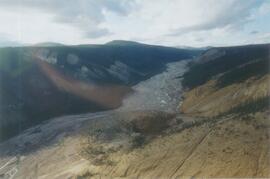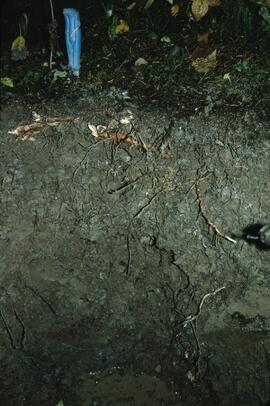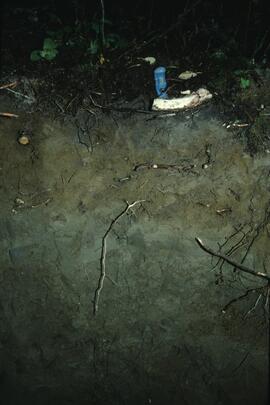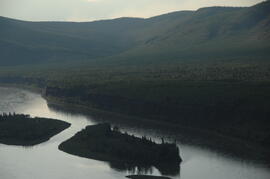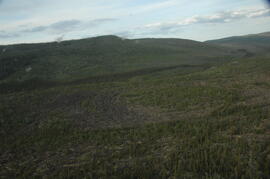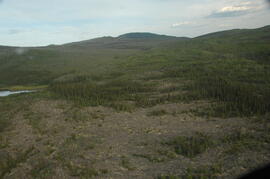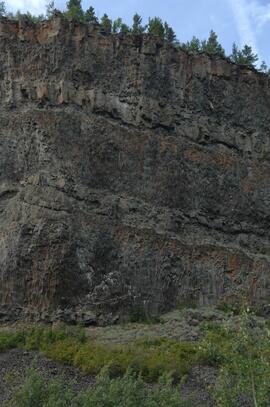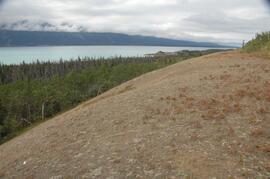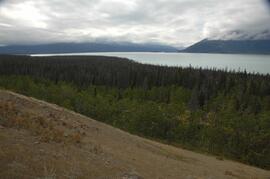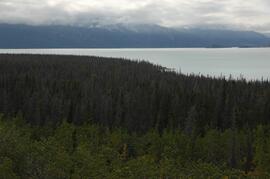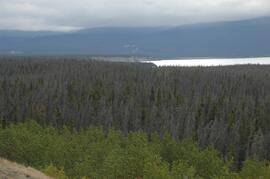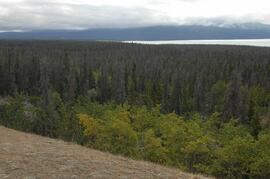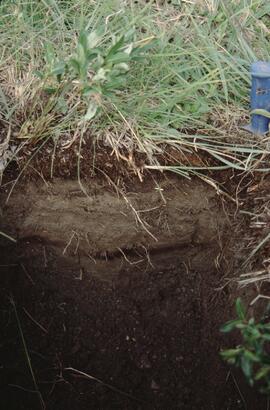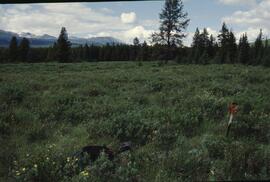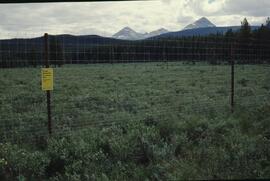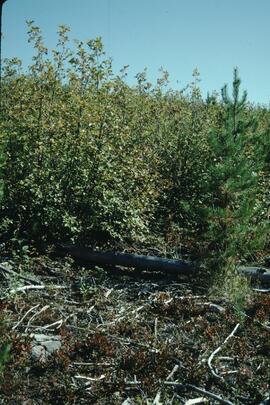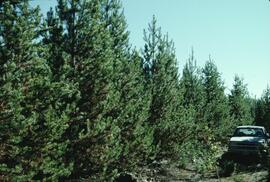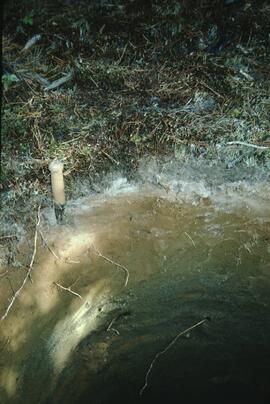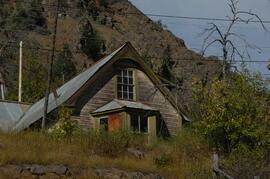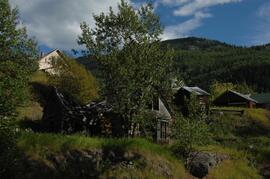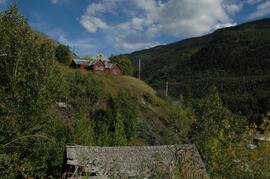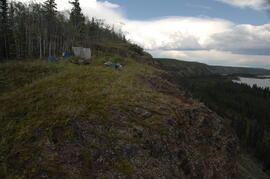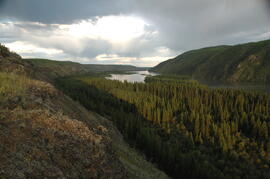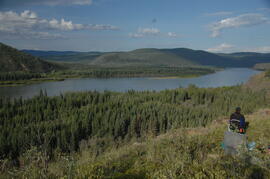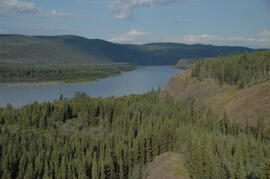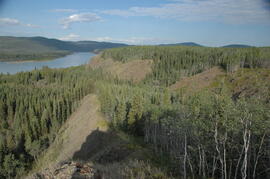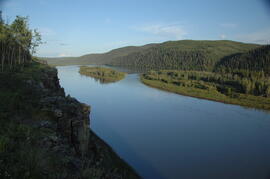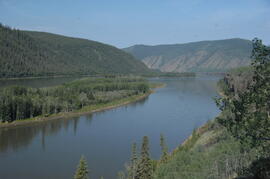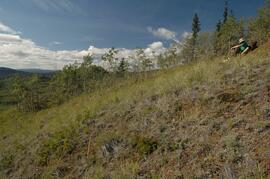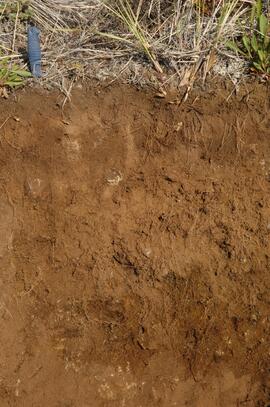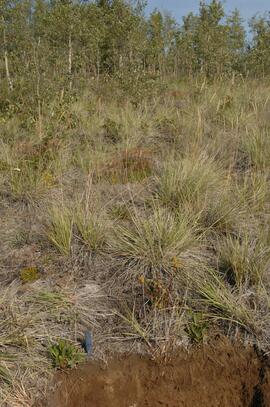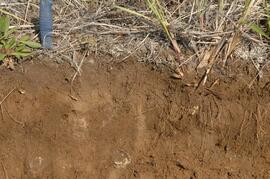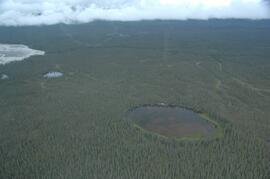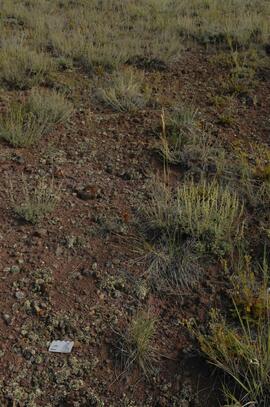During the 1980s, Agriculture Canada pedologists Scott Smith (retired from Summerland Research Station, formerly based in Whitehorse) and Charles Tarnocai (retired from Central Experimental Farm, Ottawa) had a large field program which addressed the trends in soil development in the central Yukon. Across this region, particularly between Whitehorse and Dawson City, the land surfaces and surficial deposits vary greatly in age due to the differing extents of glaciations over the past ~2 million years.
This work built on a pioneering study from the previous decade:
Foscolos, A.E., N.W. Rutter, and O.L. Hughes. 1977. The use of pedological studies in interpreting the Quaternary history of central Yukon Territory. Bulletin 271. Geological Survey of Canada, Ottawa. 48 p. https://doi.org/10.4095/103066
Tarnocai and Smith presented their results in two publications:
C. A. S. Smith, C. Tarnocai, and O. L. Hughes. 1986. Pedological investigations of Pleistocene glacial drift surfaces in the central Yukon. Géographie physique et Quaternaire, 40 (1): 29–37. https://doi.org/10.7202/032620ar
Tarnocai, C. and C. A. S. Smith. 1989. Micromorphology and development of some central Yukon paleosols, Canada. Geoderma 45 (2): 145-162. https://doi.org/10.1016/0016-7061(89)90047-5
Tarnocai and Smith shared the unpublished data and soil samples from this work with Dr. Paul Sanborn, and this resulted in a student project published as:
Daviel, E., P. Sanborn, C. Tarnocai, and C.A.A. Smith. 2011.Clay mineralogy and chemical properties of argillic horizons in central Yukon paleosols. Canadian Journal of Soil Science 91: 83-93. https://doi.org/10.4141/cjss10067
In July 2009, Dr. Paul Sanborn undertook the first soils field research at the Fort Selkirk volcanic field in central Yukon, with helicopter support and funding from the Yukon Geological Survey. This file consists of prints of aerial photographs that depict the area accessed for the study, upstream from the confluence of the Yukon River and the Pelly River.
Air photographs include:
Flight line A17210, Photo Nos. 54-60 (taken 1960)
Flight line A22354, Photo Nos. 43-45, 47-48 (taken 1971)
Flight line A27516, Photo Nos. 48-52 (taken 1989)
This PDF contains site location data, annotated soil profile photographs, and AMS radiocarbon dates for 2004 soil charcoal samples collected at Kluane Lake, Yukon Territory.
This PDF contains site location data, annotated soil profile photographs, and AMS radiocarbon dates for 2008 soil charcoal samples collected at Kluane Lake, Yukon Territory.
Unpublished results for the Sulphur stable isotope tracer study (E.P. 886.15) were presented in annual reports to the funding agencies, including this FII Final Report from April 2003.
The Archie Creek site is the informal name used for a research installation established in 1971 east of Prince George by the Canadian Forest Service, and subsequently abandoned by the end of that decade. Dr. Paul Sanborn revisited the site in 1995, and sampled forest floors and mineral soils across a range of conifer-broadleaf mixtures established by natural establishment of broadleaf trees among planted lodgepole pines.
Details of the site conditions, sampling methods, and results were published in:
Sanborn, P. 2001. Influence of broadleaf trees on soil chemical properties: A retrospective study in the Sub-Boreal Spruce Zone, British Columbia, Canada. Plant and Soil 236: 75–82. https://doi.org/10.1023/A:1011973402414
File contains the following data sets:
- Archie Site Tree Data.xls [diameter (dbh) and basal area of trees within and overhanging plots]
- Archie Site non-woody forest floor properties (1995).xls [non-woody forest floor chemical properties – individual sample results & plot means]
- Archie Site woody forest floor component properties (1995).xls [total C, N & S concentrations, pool sizes for woody forest floor components]
- Archie Site mineral soil properties (1995).xlsx [0-20 cm mineral soil chemical properties – individual sample results & plot means]
- Archie Site forest floor mass (1995).xlsx [mass per unit area of non-woody & woody forest floor components, corrected to oven-dry basis]
- S221FINL.xls [MoF lab data report: non-woody forest floor components]
- S222FINL.xls [MoF lab data report: woody forest floor components]
- S251FINL.xls [MoF lab data report: 0-20 cm mineral soil]
This map depicts the location of the Archie Creek site, annotated on a photocopied 93I.011 BC government map (undated).
File contains 2 rolls (51 slides) taken September 25-26, 1995 that depict paired views of plot vegetation and forest floor surface. Handwritten number notations on slide frames indicate plot numbers from the original research installation.
This image is part of the outbound sequence of aerial images obtained on the helicopter flight to the Klutlan Glacier study site. The sequence starts from the base camp at the White River crossing on the Alaska Highway and heads south, to a point just upvalley of the debris-covered terminus (approx. 10-15 km from Alaska border), and turning back north to the landing spot on the Generc River floodplain close to the study site (see Fig. 1 in paper).
This document file "Cluculz Creek Fertilization Research Site.pdf" contains a field description and basic characterization data for a representative pedon at the E.P. 886.10 site.
During Dr. Sanborn's years with the Ministry of Forests research program (1991-2002), he worked on forest fertilization research with silviculturist Rob Brockley (retired; formerly at Kalamalka Research Station, Vernon, BC). Brockley’s work in the 1980s and early 1990s had documented the widespread pattern of sulphur deficiencies across the BC interior, and the superior response of managed stands to fertilization treatments involving sulphur (S) and nitrogen (N) rather than nitrogen alone.
To progress farther, different methods for understanding the fate of sulphur fertilizers in forests and soils were needed. Sanborn contacted the stable isotope group at the University of Calgary which had done important work on the fate of pollutant sulphur emitted by oil and gas extraction and processing in Alberta, using natural abundances of sulphur stable isotopes as a tracer. This was the beginning of a collaboration with Dr. Bernhard Mayer of the University of Calgary, and also with his German soil scientist colleague, Dr. Joerg Prietzel (Munich Technical University).
The research team engaged in the Cluculz retrospective study (E.P. 886.10) for the BC Ministry of Forests.
An ancillary project involved resampling (2002 - foliage, 2003 - soil) of a previously fertilized (1990) installation (E.P. 886.10) south of Cluculz Lake in order to compare the longer-term effects of different fertilizer sulphur forms on soil and foliage chemical properties. Results were published as a journal article and a Ministry of Forests Extension Note:
Sanborn, P.T., J. Prietzel, R.P. Brockley. 2005. Soil and lodgepole pine foliar responses to two fertilizer sulphur forms in the Sub-Boreal Spruce zone, central interior British Columbia. Can. J. For. Res. 35 (10): 2316-2322. https://cdnsciencepub.com/doi/abs/10.1139/x05-138
Sanborn, P. and R. Brockley. 2005. Sulphur deficiencies in lodgepole pine: occurrence, diagnosis, and treatment. Ext. Note 71. B.C. Min. For., Res. Br., Victoria, B.C. https://www.for.gov.bc.ca/hfd/pubs/docs/en/En71.pdf
Research on the ecological functions of coarse woody debris (CWD) in forests, and techniques for inventorying CWD, were major topics for forest ecologists and soil scientists during Paul Sanborn's years with BC Forest Service research program (1991-2002).
File of documents consists mostly of unpublished internal and consultant reports, workshop summaries & handouts, and government publications (BC, Canada, USA). Methods-related documents may have been drafts which were superseded later by published manuals. In some cases, the document has a memo or email attached which provides some additional context.
Includes the following items:
BIOFOR Resource Consultants. (n.d.) Methodology for developing coarse woody debris photo guides. [consultant report to Ministry of Forests, Research Branch]
Brown, J.K., T.E. See. 1981. Downed dead woody fuel and biomass in the northern Rocky Mountains. General Technical Report INT-117. USDA Forest Service.
Clark, D.F., P.J. Burton, J.A. Antos. 1995. A comparative study employing different methods for inventory of coarse woody debris. Symbios Research and Restoration, Smithers, BC. September 30, 1995.
Ellis, R. 1996. Summary of the coarse woody debris workshop, Cowichan Lake Research Station, April 11-12, 1996. [Incl. handouts by A. Mackinnon, S.W. Taylor & J.V. Parminter]
Ember Research Services Ltd. 1997. CWD/Fuel calculator user’s guide. October 1997.
Hermanek, H. 2001. The distribution and description of CWD in the SBSmk1 and IDFdm2 zones of British Columbia. Work term report, Biology Co-op Program, University of Victoria.
Lajzerowicz, C. 2000. Coarse woody debris: what are we leaving in British Columbia. Examining TRENDS. ET2000-02. Northern Interior Vegetation Management Association.
Lajzerowicz, C. 2000. Coarse woody debris: what are the changes following harvesting in Alberta. Examining TRENDS. ET2000-03. Northern Interior Vegetation Management Association.
Lloyd, R. 2001. A comparison of coarse woody debris in harvested and unharvested sites in the SBSmc2: First-year report, March 2001. Prepared for: Houston Forest Products.
Mackinnon, A. 1996. What kind of CWD measurements are MOF research ecologists using? [handout at CWD Workshop, April 11-12, 1996]
Mackinnon, A., J. Parminter. 1996. Natural landscape patterns and processes. Notes from a meeting at Cowichan Lake Research Station, April 10, 1996.
Marshall, P.L. 1999. Using line intersect sampling to determine the volume of odd-shaped pieces of coarse woody debris: an explanation of the Vegetation Resources Inventory formula. Contract report to: Ministry of Forest, Vancouver Region. February 1999.
Marshall, P.L., G. Davis, V.M. LeMay. 2000. Using line intersect sampling for coarse woody debris. Forest Research Technical Report, TR-003. Vancouver Forest Region.
Ministry of Forests, Resources Inventory Branch 1999. Pilot study for dead tree information on growth and yield permanent sample plots.
Parminter, J. 1994. Correction factors and the measurement of coarse woody debris. Research Branch, Ministry of Forests. March 11, 1994.
Parminter, J. 2001. Natural disturbance research and project summaries. Cowichan Lake Research Station meeting, April 10, 1996.
Parminter, J. 2001. Procedures for measuring CWD volume in spot accumulations, landing piles and strip accumulations.
Parminter, J. 2001. CWD extensive pilot program – sampling of CWD in cutblocks.
Robson Valley Enhanced Forest Management Pilot Project. 2001. Field data collection protocol manual: coarse woody debris survey 2001. [attached covering email from B. Rogers]
Rogers, B. 2001. Robson Valley Enhanced Forest Management Pilot Project, Coarse Woody Debris Assessment Phase I: Working Plan 2001. Prepared for: Ministry of Environment, Lands and Parks. March 3, 2001.
Snag Protocol Team. 2000. Northern region snag management protocol: January 2000. USDA Forest Service, Northern Region.
Taylor, S.W., J.V. Parminter. 1996. Effects of broadcast burning on coarse woody debris in British Columbia. [handout at CWD Workshop, April 11-12, 1996]
Graham, R.T. et al. 1994. Managing coarse woody debris in forests of the Rocky Mountains. Research Paper INT-RP-477. Intermountain Research Station, USDA Forest Service. Available online at: https://www.fs.usda.gov/research/treesearch/24829 (accessed March 2023)
Harmon, M.E., J. Sexton. 1996. Guidelines for measurements of woody debris in forest ecosystems. Publ. No. 20. U.S. LTER Network Office. Available online at: https://andrewsforest.oregonstate.edu/pubs/webdocs/reports/detritus/publications/Guidelines%20for%20Measurements%20of%20Woody%20Detritus%20in%20Forest%20Ecosystems.pdf (accessed March 2023)
Rogers, B. 2002. Robson Valley Enhanced Forest Management Pilot Project, Coarse Woody Debris Assessment Phase III: Final Report. Prepared for: Ministry of Environment, Lands and Parks. Available online at: https://www.env.gov.bc.ca/omineca/documents/cwd_2002_reportf.pdf (accessed March 2023)
Stevenson, Susan K. (March 1999). Biodiversity assessments at silvicultural systems sites, summer 1998. Prepared for: Prince George Forest Region, BC Ministry of Forests, Prince George BC. 16 p. + 16 p. graphs
Taylor, S.W. 1997. A field estimation procedure for downed coarse woody debris. Technology Transfer Notes. No. 2, August, 1997. Available online at: https://publications.gc.ca/site/eng/409169/publication.html (accessed March 2023)
